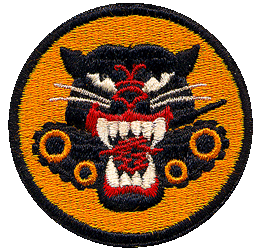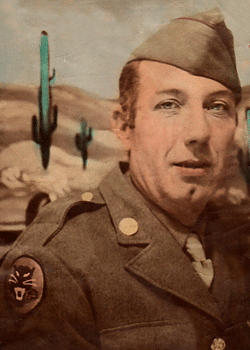 Stanley F. Pasela
Stanley F. Pasela
Biography: Stanley F. Pasela was born in 1907, probably in the Central Falls area of Rhode Island. He was the son of John M. and Nellie Pasela and attended local schools. His enlistement record identifies that he was living in Ocean County, New Jersey, when he entered the service and was working as a fisherman or oysterman at the time.
Service Time: Stanley entered the service at Fort Dix, NJ, on April 6, 1942, and was assigned to First Platoon, B Company, of the 811th Tank Destroyer Battalion. The 811th arrived in Cherbourg, France, on September 15, 1944. They were equipped with M18’s and proceeded to Luxembourg and later participated in the Battle of the Bulge in December. The unit history indicates that the 1st Platoon/B Company was attached to Task Force Collins of the 9th Armored Division. On Dec. 29th, they were leaving Sibret, Belgium, and attacking toward Chenogne when the destroyer of Sgt. Apadoca was hit, seriously wounding him and his gunner, Cpl. Winchester, and killing Stanley. His date of death is listed as Dec. 30, 1944.
Stanley’s mother most likely would have received a telegram notifying her of her son’s death. The clipping listed below mentions that he had originally been identified as MIA (Missing in Action). The following letter was sent to her, three months later in March, from the Headquarters First Army Service Command, located in Boston, Massachusetts.
Letter from First Service Command
Pfc. Stanley F. Pasela was buried in Plot E, Row 13, Grave 55, at the Henri-Chapelle American Cemetery, in Henri-Chapelle, Belgium. He was awarded the Purple Heart.
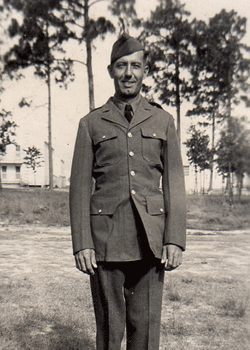
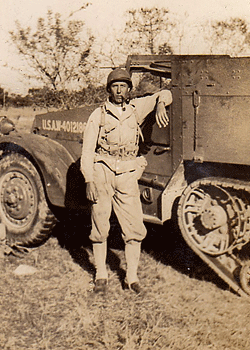
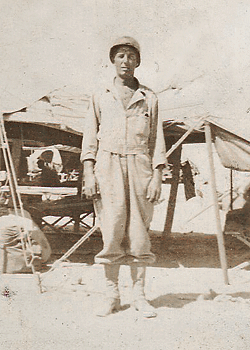
The photos were all taken while Stanley was still in the U.S. at various training camps. The photo at left may have been taken while the unit was in the Arizona desert, near Yuma. The unit’s history mentions that it was that location where the unit became truly “organized for combat”. They also took part in the Louisiana Maneuvers.
I want to thank Bob Scappini for providing these photos of Stanley. Bob teaches history in Stanley’s hometown of Central Falls and found the materials stored in a closet. I can only image that the materials were donated to the school, by the family, to preserve Stanley’s memory. It is my hope that this tribute page will keep his memory alive and clearly note the sacrifice both he and his family made for this country.
